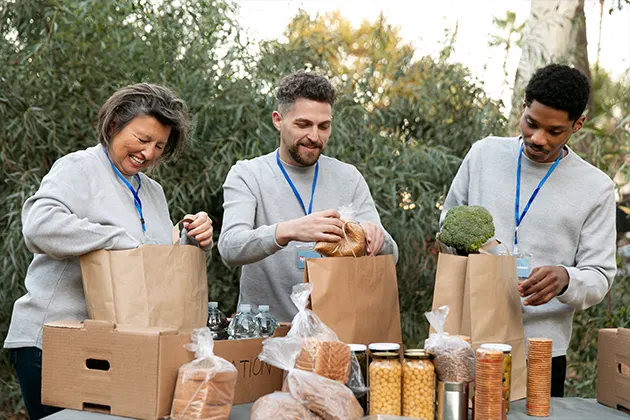Bulk food storage plays a crucial role in supply chains, but it also carries a major responsibility. Materials used to protect food must be strong, safe, and reliable, but that doesn’t mean they need to harm the environment in the process. The packaging industry is seeing a shift in priorities, where shelf life and sustainability must go hand in hand. More businesses are rethinking how their storage systems align with environmental standards, customer values, and logistical realities. With food waste and plastic waste both under the spotlight, packaging is becoming a key area for innovation. Choosing better storage solutions isn’t just about operational efficiency—it’s about long-term accountability. Read through this article to explore where packaging is headed and how it’s adapting to modern expectations.
Long-Term Protection Without Long-Term Waste
Bulk food packaging must do more than just contain—it must preserve. Moisture, oxygen, pests, and temperature changes are all real threats to food integrity, especially when stored over weeks or months. Traditional packaging materials have handled this well, but often at a steep environmental cost. Layers of plastic, aluminum, and synthetic liners keep food fresh, but they also linger in landfills for years.
Emerging solutions focus on materials that provide the same barriers while being easier to break down or reuse. This includes compostable films, biodegradable liners, and mono-material structures that simplify recycling. The goal isn’t to compromise shelf life, but to match it with a package that won’t outlive the product by decades.
Food-grade certifications and moisture-proof features are still necessary. The difference now is that manufacturers are finding ways to meet those standards using ingredients and structures that align better with nature. High-performance doesn’t have to mean high waste anymore, and food companies are starting to take that seriously.
Storage Design That Supports Volume and Versatility
Large-volume food storage creates unique challenges, especially when one container is expected to hold up across changing conditions. The packaging must not only resist wear but also adapt to real-world use: repeated opening, scooping, sealing, stacking, and transport. Rigid formats offer protection but are often bulky and hard to dispose of. Flexible formats reduce waste, but can struggle with durability.
Newer storage options are bridging the gap. Multi-use pouches with high-strength seals, collapsible bins lined with food-safe materials, and heavy-duty compostable bags are becoming practical alternatives. These designs hold up under pressure but don’t take up unnecessary space during or after use.
For facilities or operations storing a variety of dry goods—grains, legumes, spices, powders—modular systems help scale efficiently. Using interchangeable components or packaging formats that work across different food types reduces clutter and simplifies inventory control.
Versatility in design also makes it easier to shift between use cases, like moving from retail storage to food service or bulk sales. The more adaptable the packaging, the more value it delivers throughout the supply chain.
Clean Transport Meets Cleaner Disposal
Storage is only one part of the equation. Most bulk food packaging must also travel—from production plants to warehouses, then on to distribution centers, and sometimes even directly to the customer. That journey demands protection, but it also creates opportunities to rethink how materials are handled at the end of it.
In the past, transport-friendly packaging often meant heavy-duty plastics or combinations of materials that were hard to separate or recycle. Today, lighter options with better environmental profiles are entering the market. Films made from plant-based resins, water-resistant paperboard, and reusable containers that can be returned through closed-loop systems offer a better balance.
More logistics providers are also looking at how packaging impacts waste at the destination. Can the packaging be flattened or composted on-site? Does it reduce mess during emptying? Is it labeled enough to avoid contamination in recycling streams?
When food packaging is designed with transport and end-use disposal in mind, it prevents issues like overflow, spoilage, or cross-contamination. This saves time, reduces operational waste, and aligns with the growing demand for cleaner, simpler systems from both customers and regulators.
Minimizing Material Without Losing Function
One of the simplest paths to sustainability is to use less. But in food storage, going too far can put product safety at risk. So the challenge becomes: how do you reduce material without compromising the function?
One approach is design efficiency. Engineers are reducing thickness while maintaining strength, refining sealing technologies, and switching to mono-material formats that do more with less. They’re also removing unnecessary secondary packaging layers, choosing resealable features over outer wraps, and shifting to right-sized formats that match the product weight more closely.
Clear labeling and smart closures also reduce the need for tamper bands, shrink sleeves, or redundant adhesives. These tweaks don’t just help the environment—they reduce production costs and often improve the user experience.
Brands that take this route are finding they can cut material by 20–40% in some cases, without affecting the integrity of the food inside. In large-scale operations, those savings add up quickly, both in terms of environmental impact and operating expenses.
Aligning Packaging With Policy and Reputation
As sustainability regulations tighten, packaging compliance is moving from optional to mandatory. Countries and regions are banning certain plastics, capping landfill quotas, and introducing extended producer responsibility (EPR) laws that hold companies accountable for the waste they generate. Food producers who fail to adapt face fines, product bans, or damage to their reputation.
The good news is that aligning with policy often boosts public perception. Packaging that reflects environmental values resonates with customers, especially in retail and food service sectors where margins are thin and loyalty matters. When consumers see that a business is actively reducing waste, it builds trust and signals a long-term commitment to responsible practices.
Beyond consumer pressure, food companies are also seeing sustainability affect B2B relationships. Distributors, grocery chains, and food co-ops are starting to prioritize vendors who can show real progress in environmental performance, including packaging choices.
That’s where smart packaging becomes more than a technical fix—it becomes a market advantage. Choosing formats that meet the growing demand for cleaner operations helps brands stay relevant, credible, and ready for what’s next.
Food producers, wholesalers, and retailers working to balance protection with responsibility are now turning to sustainable options for bulk food storage that offer durability without long-term environmental cost.










